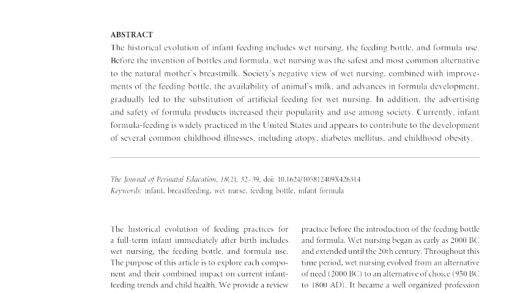Cats have distinct petting preferences that vary by breed and individual. Understanding where they enjoy being petted, such as under the chin or behind the ears, is key. Common misconceptions about petting can lead to discomfort, so it’s essential to learn the signs that indicate a cat enjoys petting. Research shows specific techniques and short sessions are preferred. Different breeds may have unique likes, and improving the petting experience can strengthen the bond between cat and owner.
Where Do Cats Like to Be Petted?
Understanding cat petting preferences is essential for building a positive relationship with your feline friend. Cats have specific areas they enjoy being petted, which can vary among individual cats. Generally, cats prefer to be petted in the following areas:
- Chin and Jaw: Many cats love a gentle rub under the chin and along the jawline. This area mimics their natural grooming habits and can be very comforting.
- Behind the Ears: Petting behind the ears can trigger a sense of relaxation in cats. It’s a spot that often feels safe and secure for them.
- Base of the Tail: Surprisingly, many cats enjoy being petted at the base of their tail. This area is less commonly targeted by owners, but it’s often a favorite.
- Between the Eyes: A gentle stroke between the eyes can be soothing. It’s a calming gesture that many cats respond well to.
However, it’s crucial to observe your cat’s reactions while petting them. Some cats may prefer different areas based on their personality and previous experiences. Always look for signs of comfort, such as purring or leaning into your hand.
Common Misconceptions About Cat Petting
When it comes to cat petting, there are several misconceptions that often lead to discomfort for the cat. One common myth is that all cats enjoy being petted in the same way. This is far from the truth; each cat has unique preferences.
- Misconception 1: Cats love to be petted everywhere. This isn’t always true. Many cats dislike being touched on their belly or paws.
- Misconception 2: All cats purr when they are happy. While purring is usually a sign of contentment, some cats purr when they are anxious or uncomfortable.
- Misconception 3: Petting should be continuous. In reality, cats often prefer short sessions of petting. Overdoing it can lead to overstimulation.
Understanding these misconceptions can help cat owners create a more enjoyable petting experience. Always pay attention to your cat’s cues and adjust your approach accordingly.
Why Do Owners Pet Cats in Disliked Areas?
Many cat owners inadvertently pet their cats in areas that the cats dislike. This often stems from a lack of understanding of feline behavior. Here are some reasons why this happens:
- Inexperience: New cat owners may not know where their cats prefer to be touched, leading to accidental discomfort.
- Misreading Signals: Some owners misinterpret a cat’s body language. Just because a cat is nearby doesn’t mean it wants to be petted.
- Desire to Bond: Owners may feel a strong urge to bond with their cats and may not realize that their chosen petting technique is not enjoyable for the cat.
Being aware of these reasons can help owners adjust their petting styles. With a little observation and patience, owners can learn to pet their cats in ways that enhance their bond.
What the Study Revealed About Cat Preferences
Scientific studies have uncovered fascinating insights about cat petting preferences. Research indicates that cats have distinct likes and dislikes when it comes to being petted. For instance, a study published in the Journal of Feline Medicine and Surgery showed that many cats prefer specific areas for petting. The findings suggest that petting cats on their head, chin, and cheeks often elicits positive responses, while touching the tail or stomach may lead to discomfort.
- Key Findings:
- Most cats enjoy being petted on the head, especially near the ears.
- Many cats exhibit signs of stress when touched on their belly.
- Short petting sessions are generally preferred over long ones.
These results highlight the importance of understanding individual cat preferences. Each cat is unique, and what works for one might not work for another. Observing your cat’s reactions is crucial in determining their comfort levels.
Signs a Cat Enjoys Being Petted
Recognizing when a cat enjoys being petted is vital for a positive interaction. Signs that indicate a cat is enjoying the petting experience include:
- Purring: Often a clear sign of contentment.
- Leaning in: If a cat leans into your hand, they likely want more.
- Slow blinking: Cats may blink slowly to show trust and relaxation.
- Relaxed body posture: A loose body indicates comfort.
It’s essential to pay attention to these signs to ensure that your cat feels happy and relaxed during petting sessions. If a cat suddenly pulls away or shows signs of agitation, it may be a cue to stop or change your approach.
How Petting Affects Cat Behavior
Understanding how petting affects cat behavior can significantly enhance the bond between a cat and its owner. Different petting techniques can lead to various responses in cats. For example:
- Gentle strokes: Light, gentle strokes often calm cats and can reduce stress levels.
- Firm pressure: Some cats may prefer firmer petting, especially on their back, which can feel more reassuring.
- Short sessions: Brief periods of petting are generally better, preventing overstimulation.
Additionally, studies suggest that positive interactions through petting can lead to improved behavior in cats. Cats that receive regular positive touch may be less likely to exhibit stress-related behaviors, such as hiding or aggression. Thus, knowing how to pet your cat effectively can contribute to a happier, healthier feline.
Specific Breeds and Their Petting Preferences
Cat petting preferences can vary significantly not only from cat to cat but also among different breeds. Understanding these preferences is crucial, especially for owners of specific breeds known to have unique characteristics. For example:
- Siamese: These cats often enjoy attention and may like being petted on their face and body. They thrive on interaction and can be very vocal about their preferences.
- Persians: They typically prefer gentle strokes around their head and neck, as they can be sensitive to touch in other areas due to their long fur.
- Maine Coons: Known for their friendly nature, they often enjoy petting all over, but especially on their backs and under their chin.
- Bengals: These active cats may prefer playful interactions, enjoying gentle strokes but often wanting to engage in play rather than just being petted.
Recognizing these breed-specific preferences can help owners create a more enjoyable and fulfilling petting experience. Additionally, understanding that each cat is an individual is key. Always observe your cat’s reactions to different petting techniques to find what they enjoy most.
Enhancing Cat-Owner Relationships Through Petting
Building a strong bond with your cat is essential, and understanding petting preferences can play a significant role in this process. Positive interactions through petting can lead to a more trusting and affectionate relationship. Here’s how:
- Observe and Adapt: Pay attention to your cat’s body language and adjust your petting style accordingly. This creates a more enjoyable experience for both you and your cat.
- Quality Over Quantity: Short, positive petting sessions are often more effective than long ones. Cats can become overstimulated, so recognizing when to stop is important.
- Engagement: Combine petting with playtime to enrich your cat’s environment. This not only satisfies their need for interaction but also strengthens your bond.
By focusing on how your cat prefers to be petted, you can foster a deeper connection. A cat that feels comfortable and loved is more likely to reciprocate affection, making your relationship more rewarding.
Adjusting Petting Techniques for Better Interactions
To improve interactions with your cat, consider these actionable tips:
- Start Slow: Begin with gentle strokes in preferred areas to gauge your cat’s comfort level.
- Mix It Up: Experiment with different petting styles, such as light strokes versus firmer pressure, to see what your cat enjoys most.
- Follow Their Lead: If your cat seems to enjoy a particular area, continue there, but be ready to stop if they show signs of discomfort.
Ultimately, adapting your approach based on your cat’s unique preferences can lead to better interactions and a happier, healthier relationship. Remember, each cat is different, and what works for one may not work for another. Your willingness to learn about their likes will greatly enhance your bond.





Comments are closed.